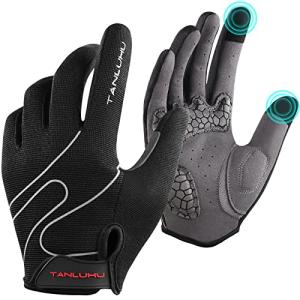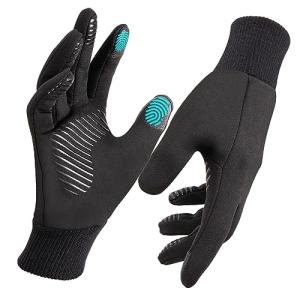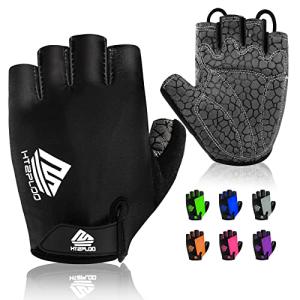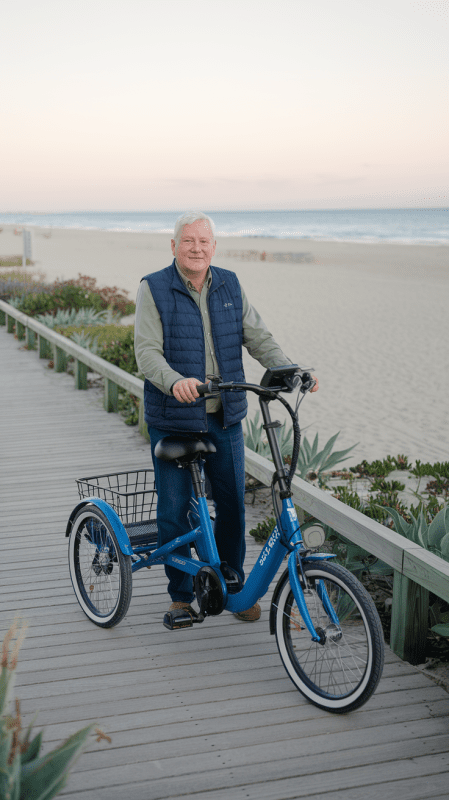Top Reasons Seniors Are Switching to Electric Tricycles: Mobility, Comfort, and Independence
More seniors are turning to electric tricycles instead of traditional bikes or mobility scooters for daily transportation. These three-wheelers offer a nice mix of stability, independence, and ease of use—ideal for older adults who want to keep moving and active.

Electric tricycles let seniors run errands, visit friends, and get outside without needing a ride or worrying about balance. The electric motor cuts down on physical effort, and those three wheels mean no more fear of falling.
Step-through frames, comfy seats, and handy cargo baskets really make these vehicles fit for seniors. They’re designed with those needs in mind, not just adapted from regular bikes.
Key Takeaways
- Electric tricycles offer stable, three-wheel mobility and help seniors handle errands without balance worries.
- They reduce physical strain with electric assist and features like supportive seats and easy step-through frames.
- Seniors get practical cargo space, low upkeep, and a way to stay social in their communities.
Why Seniors Are Embracing Electric Tricycles
Electric tricycles are catching on with seniors who want to stay active but need a little help with mobility. These vehicles tackle common problems like balance and strength, letting folks travel farther than they could on foot.
Enhanced Everyday Mobility
Electric tricycles change how seniors handle daily errands. The motor kicks in when pedaling gets tough, so riders can go farther without getting worn out.
Key mobility advantages include:
- Carry groceries and packages in built-in baskets
- Get to appointments without needing someone else
- Climb hills and inclines with electric assist
- Go 15-30 miles on a single charge
That three-wheel setup takes away the balance worries that come with regular bikes. Riders can stop without putting their feet down, which feels way safer in traffic.
Seniors can ride at their own pace, pedaling more on good days or leaning on the motor when they’re tired. That flexibility makes electric trikes a real option for daily use, not just the occasional outing.
Gaining Independence Through E-Trikes
Independence matters a lot as mobility gets harder with age. E-trikes give seniors control over their transportation again.
Some folks have to give up driving because of vision or slower reflexes. Electric tricycles don’t usually need a license or registration, so they’re a solid alternative.
Independence benefits include:
- No dependence on family for short trips
- Flexible scheduling—no waiting for a ride
- Cost savings over taxis or ride services
- Staying social thanks to personal mobility
The low step-through design makes it easy to get on and off, even for those with limited movement. That’s a big deal for people who can’t manage a regular bike frame.
With 20-40 miles of battery range, most local trips are covered. Seniors can visit friends, see the doctor, or shop without needing help.
Appeal for Active Senior Lifestyles
Active seniors find electric trikes fit right in with their lifestyle. They’re great for both fun and practical trips.
Some retirement communities even organize group rides. These rides are a fun way to exercise and make friends at the same time.
Adjustable assist levels let riders pick how much effort they want. They can pedal harder for exercise or let the motor do more work when they’re stiff.
Lifestyle benefits include:
- Low-impact exercise that’s gentle on joints
- Outdoor activity boosts mood and mental health
- Social time with riding groups
- Chance to explore neighborhoods and parks
Many seniors like that electric trikes don’t look like medical gear. They look modern and help riders feel confident, not self-conscious.
Accessories like canopies and windshields help with bad weather. That means seniors can ride in light rain or bright sun, so it’s not just a fair-weather option.
Stability and Safety Advantages

Electric tricycles deliver stability with their three-wheel design and include safety features like hydraulic disc brakes and rearview mirrors. For many seniors, they’re a safer pick than mobility scooters.
Three-Wheel Stability Reduces Fall Risk
The triangular wheelbase creates a wide, steady footprint. It resists tipping, whether you’re moving slow or stopped at a light.
Unlike regular bikes, you don’t have to balance constantly. You can stop and stay upright, no problem.
This stability matters a lot for people with balance or joint issues. The three-wheel design takes away the fear of falling.
Trikes stay stable even when loaded with groceries or bags. The low center of gravity helps keep things steady during turns and stops.
Many models use step-through frames, so seniors can get on and off slowly, without the rush or awkwardness of balancing a two-wheeler.
Safety Features That Build Confidence
Modern electric trikes use hydraulic disc brakes for strong stopping power, even in the rain. These brakes need less hand strength, which is great for anyone with arthritis.
Rearview mirrors come standard on most models aimed at seniors. They let riders see traffic without twisting around.
Some trikes come with parking brakes to keep them still on hills. LED lights and reflectors help with visibility, day or night.
Wide, cushioned seats with backrests cut down on fatigue. Big, clear displays show speed and battery levels without making riders squint.
Comparing Electric Tricycles to Mobility Scooters
Electric tricycles usually handle uneven ground better than scooters. The bigger wheels and steering help trikes roll over bumps that might stop a scooter cold.
Trikes let you pedal if you want, so you get some exercise. Scooters just carry you along, no effort needed.
Trikes often have more storage, with baskets in front and back. The open design makes it easier to load and unload, especially for folks with limited movement.
Maintenance is usually cheaper for trikes, since they use regular bike parts. You can get repairs at most bike shops, which isn’t always true for scooters.
Comfort-Oriented Design Features

Electric tricycles focus on comfort, starting with low step-through frames that make getting on and off easy. Padded seats with back support and adjustable handlebars help riders find their best fit.
Step-Through Frames for Easy Access
Step-through frames sit lower than regular bikes. Seniors don’t have to swing a leg high over a bar to get on.
The opening is usually 12-18 inches off the ground, which works well for people with hip or flexibility issues.
Key benefits of step-through design:
- No need to swing your leg over a high bar
- Less chance of losing balance while getting on
- Works with dresses or loose clothes
- Lets you keep both feet on the ground when stopped
Some trikes have the step-through as low as 10-14 inches. That’s reassuring when starting or stopping a ride.
The low frame also drops the center of gravity, making the whole trike more stable in turns and at stops.
Ergonomic Seating and Adjustable Handlebars
Electric tricycles use wide, padded seats to support your weight comfortably. Most seats are 12-16 inches wide with a couple inches of foam.
Many models include a backrest, making longer rides easier on your posture.
Adjustable handlebars help each rider find the right position. Most let you change both height and angle, so you don’t strain your wrists or shoulders.
| Feature | Benefit |
|---|---|
| Wide seat | Distributes weight evenly |
| Padded cushion | Reduces pressure points |
| Backrest | Supports spine alignment |
| Adjustable handlebars | Customizes reach and height |
Some comfort-focused models even add armrests for extra support. That little detail helps riders feel more secure.
Smooth Ride and Handling
Large tires do a better job soaking up bumps and cracks. Most senior-focused trikes use 20-26 inch tires with thicker treads.
Front suspension smooths out road vibrations before they reach your hands and arms. That makes longer trips less tiring.
The wide wheelbase keeps handling steady. Seniors can ride in a straight line without making constant corrections.
Electric motors deliver steady, predictable power. Riders control speed with a thumb throttle or pedal assist, both of which feel natural and easy.
Comfort features for smooth operation:
- Soft grips to reduce hand fatigue
- Easy-reach brake levers that don’t need a lot of finger strength
- Simple control panels for battery and speed
- Low-maintenance parts keep repairs to a minimum
With three wheels, there’s no need to balance. You can stop and just sit there, feeling stable the whole time.
Practical Benefits for Daily Life

Electric trikes tackle real, everyday transportation problems for seniors. They offer smart storage, haul heavy loads, and handle different weather without much fuss.
Carrying Groceries and Essentials
Most electric trikes come with rear baskets that hold 50 to 150 pounds of cargo. Seniors can carry a full week of groceries without straining themselves.
The stable three-wheel design makes it safe to transport heavier items. Unlike regular bikes, you don’t have to worry about balance when the basket is loaded up.
Many models include front baskets too. These are handy for purses, medications, or anything you want to keep close during the ride.
Electric trikes handle extra weight easily because of their motors. Seniors can pedal normally even with full baskets, and the motor gives a helpful boost when needed.
Some trikes support pet carriers in the rear basket. This means you can bring a small dog or cat along for errands or a quick visit.
Storage Solutions for Senior Riders
Electric trikes offer several storage solutions beyond just baskets. Many have under-seat compartments for valuables or personal items.
Side panniers attach to the rear rack for extra carrying space. These are great for longer trips or bigger shopping runs.
Some models feature cup holders and phone mounts on the handlebars. That way, important items stay secure and within reach while riding.
Weather-resistant covers keep baskets and cargo safe from rain or sun. You’ll find these included on some models, or you can buy them separately.
Locking storage boxes sometimes replace standard baskets. These offer secure storage for expensive items or medications that need protection.
The step-through frame design makes loading and unloading a breeze. Seniors can avoid lifting things over high bars or awkward frame parts.
Weather Adaptability and Versatility
Electric trikes work well in light rain because of their stable design and good traction. Three wheels grip the road better than two, especially on wet pavement.
Most models have fenders to keep water and mud off the rider. You can still run errands even if the roads are a bit wet.
Battery systems are weather-resistant, but not waterproof. It’s best to avoid deep water and heavy rain to protect the electronics.
Many electric trikes come with LED lights. These help you stay visible on cloudy days or during early evening rides.
Wide tires handle different surfaces well. You can ride on pavement, packed dirt, or even light gravel without much trouble.
Some models offer windshields or canopy options for extra weather protection. These extras help you keep riding even when it gets chilly.
Key Considerations When Choosing an Electric Tricycle
Finding the right electric tricycle takes some careful thought about size, power, and maintenance. These details really do play a big part in comfort and how happy you’ll be with your purchase in the long run.
Selecting the Right Size and Model
Frame size and design shape both comfort and safety for everyday use. A step-through frame lets you get on easily without swinging your leg over a high bar.
The seat height should let you put both feet flat on the ground when stopped. Most electric trikes have adjustable seats to fit different leg lengths.
Weight capacity varies a lot between models. Standard trikes usually handle 250-300 pounds, while heavy-duty ones can go up to 400 pounds.
Wheelbase width changes how stable and easy to turn the trike feels. Wider bases give you more stability, but they take up more space for storage and maneuvering.
Here are some key measurements to keep in mind:
- Seat height: 28-34 inches is typical
- Step-through height: 12-18 inches for easy access
- Overall width: 30-36 inches including handlebars
Trying out different models helps you find the most comfortable fit before you buy.
Battery Range and Motor Power
Battery capacity decides how far you can go on a single charge. Most models offer 20-50 mile ranges, depending on assist level and terrain.
Lithium-ion batteries last longer and charge faster than lead-acid ones. You usually get 500-1000 charge cycles before needing a replacement.
Motor power affects how well you climb hills and accelerate. 250-750 watt motors work for most riding conditions.
Important battery specs to compare:
- Voltage: 36V or 48V systems are most common
- Amp hours: Higher numbers mean longer rides
- Charging time: 4-6 hours is typical for a full charge
- Removable batteries: Handy for indoor charging
Think about your daily travel needs when looking at range. Hills, cargo weight, and weather can all affect battery life.
Maintenance, Care, and Longevity
Regular maintenance keeps electric trikes running well for years. Basic tasks include checking tire pressure, adjusting brakes, and lubricating the chain.
Battery care really matters for lifespan. Store batteries at room temperature, avoid running them completely empty, and charge after each use if you can.
Annual professional service spots problems early. Many bike shops now handle electric tricycles and stock common replacement parts.
Common upkeep includes:
- Monthly: Check tire pressure and brakes
- Quarterly: Clean and oil the chain
- Annually: Get a pro inspection and tune-up
Quality electric trikes usually last 5-10 years with decent care. Higher-end models often offer longer warranties on motors and batteries.
Try to keep your tricycle clean and dry. If possible, cover it or store it indoors to protect the electronics from weather damage.
Frequently Asked Questions
Seniors considering electric tricycles tend to have questions about practical concerns, health benefits, and safety. It’s smart to look into these before making a decision.
What are the common issues faced by seniors when using electric tricycles?
Learning to turn properly is one of the main challenges. The three-wheel design needs wider turns than a regular bike.
Some folks struggle with the weight of electric trikes. Most weigh 60-80 pounds, so they’re not easy to lift or move around by hand.
Battery management can be confusing at first. You’ll need to learn charging routines and get used to range limitations.
Storage space is sometimes a problem. Electric trikes are bigger than standard bikes and might not fit in small garages or apartments.
Getting used to the electric assist takes a little practice. Some people use too much throttle at first or find the pedal assist a bit surprising.
How do electric tricycles benefit the daily lives of seniors?
Electric trikes help seniors run errands on their own. You can carry groceries in the baskets without asking for rides.
The electric motor makes hills and longer distances way more manageable. Seniors can travel farther without getting too tired or winded.
Three wheels offer stability that regular bikes just can’t. You don’t have to worry about balancing when stopped or starting out.
Social connections get a boost too. You can visit friends and attend community events more easily with an electric trike.
Medical appointments are more accessible. Seniors can ride to nearby clinics or pharmacies whenever they need to.
What should seniors consider when choosing an electric tricycle?
Battery range is probably the most important for everyday use. Pick a model that covers your typical trip distances on one charge.
Step-through frames make getting on and off easier. High crossbars can be tough for those with limited mobility or joint pain.
Weight matters for portability and handling. Lighter models are easier to move but might have less battery capacity or stability.
Motor power determines how well you’ll handle hills. If you live in a hilly area, look for stronger motors with higher torque.
Comfort features like padded seats and backrests make longer rides much nicer. Adjustable handlebars help fit different body types.
Can electric tricycles improve physical health in senior users?
Regular riding gives you gentle cardiovascular exercise. Even with electric assist, you still use your legs and get your blood moving.
Joint mobility improves with consistent use. The smooth pedaling motion helps keep knees, hips, and ankles flexible.
Balance skills can get better over time. Steering and maneuvering still work your core muscles, even though the trike is stable.
Mental health gets a lift too—less isolation, more confidence. Just getting outside regularly can improve mood and mental sharpness.
Weight management is easier with regular activity. Electric trikes make exercise possible for seniors who can’t walk long distances.
What are the safety features to look for in an electric tricycle for seniors?
Wide wheelbase means more stability. Look for models with at least 32 inches between the rear wheels for better balance.
Good brakes are a must. Hand brakes should be easy to use, and some models add parking brakes for extra security.
Bright LED lights boost visibility. Front headlights and rear taillights help others see you in low light.
Reflective materials on the frame add another layer of safety. Many trikes include reflective strips or decals for visibility.
Low center of gravity helps prevent tipping. Models with batteries mounted low on the frame usually feel more stable.
How does the cost of an electric tricycle compare to other mobility options for seniors?
Quality electric tricycles usually run between $1,500 and $4,000. It's a one-time purchase, which often ends up cheaper than just a year of car insurance and maintenance.
Mobility scooters can range from $1,000 to $5,000. They don't handle the outdoors as well, though, and you miss out on the exercise you get with a trike.
Public transportation isn't free, either. Monthly bus passes land somewhere between $50 and $100, so after a couple of years, a tricycle can pay for itself.
Owning a car gets pricey fast—think gas, insurance, regular maintenance, and registration. For many seniors, these yearly costs easily top $5,000.
Electric tricycles are cheap to run. Charging one for a whole year usually costs under $20, unless you're riding it nonstop.







